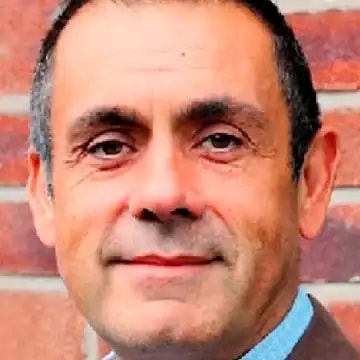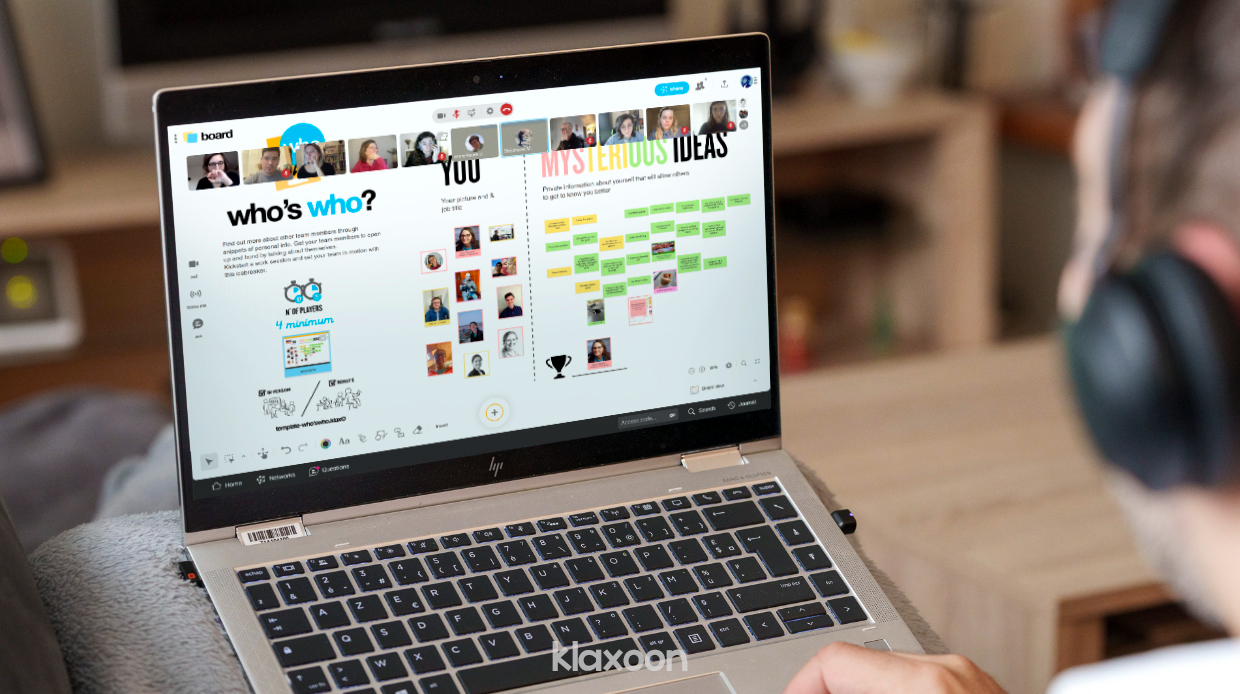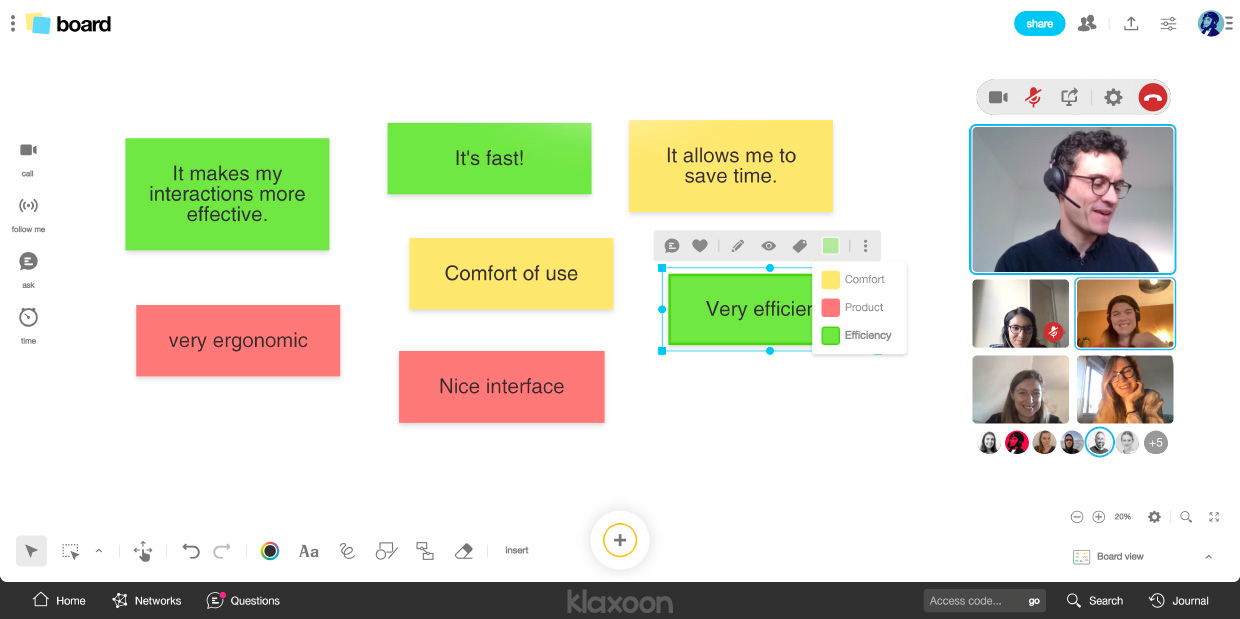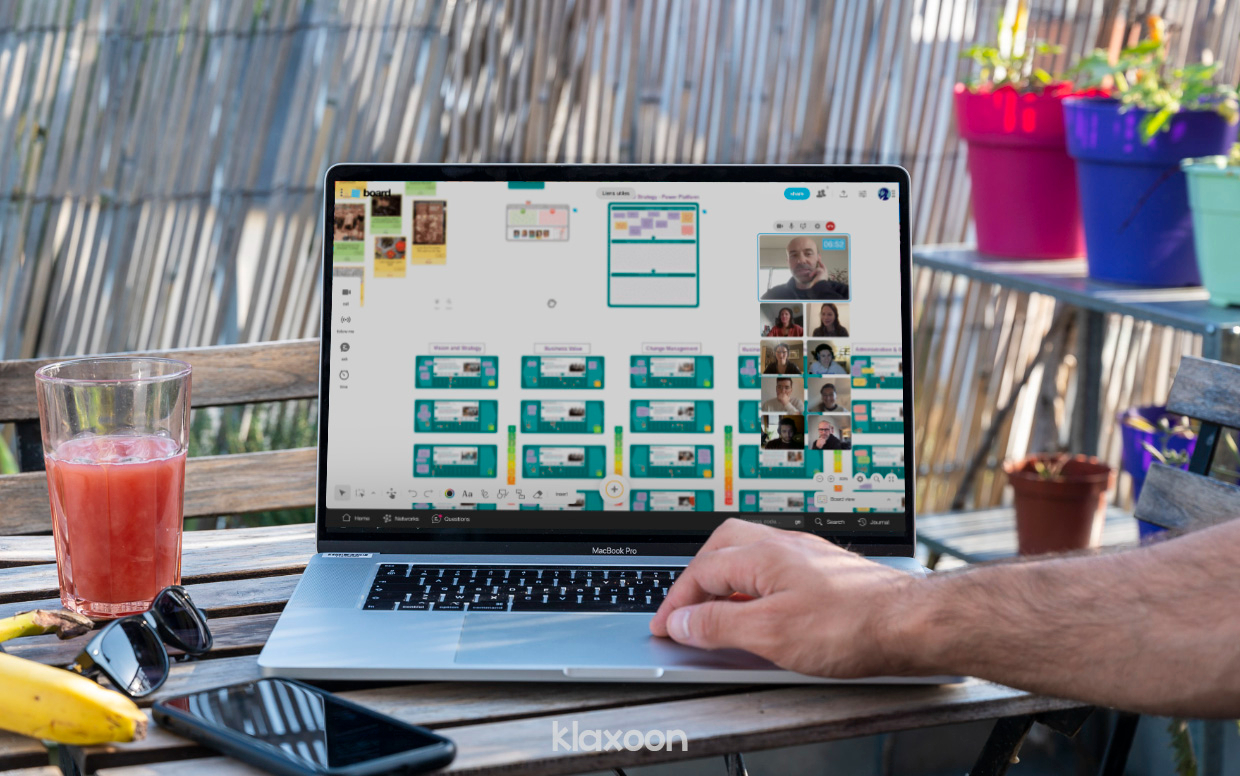How to increase participation level in customer success workshops remotely
Published on March 20, 2025
How to increase participation level in customer success workshops remotely

Customer Success Manager at Microsoft
Jonny Rowley works as a Customer Success Manager at Microsoft in the United Kingdom, and is part of a team of more than 100 people located all over the world. Being specialized in business applications for big accounts, his role is to facilitate workshops with groups of 5 to 20 people from large companies using Microsoft Business Applications, in order to drive customer adoption of these tools.
As they used to travel a lot for organizing customer success workshops in person, Jonny Rowley and his CSM team at Microsoft were forced to switch to a remote environment like many companies in 2020. Therefore, Jonny realized he needed to adapt to this new context while keeping his workshops engaging and interactive.
Before the pandemic, Jonny used to organize his customer success workshops face-to-face at the customers’ office. Which meant a lot of train and driving for him to get there, and the need to book a whole day in everyone’s agenda for this workshop. Moreover, “with 5 to 20 people participating, it was not easy to gather everyone, all coming from different parts of the UK or the world."
In 2020, like in many other sectors, teams at Microsoft were forced to work remotely. And the way Jonny and the other CSMs were running their customer engagement workshops has been impacted as well. They needed to rethink the entire organization and make sure the fact of losing in-person interactions wouldn’t reduce customer engagement during the workshops.
This led to splitting the single one-day face-to-face workshop into several remote workshops lasting 1 to 3 hours. And to ensure each group has an environment encouraging interaction and participation during these workshops, Jonny and CSM teams started using Klaxoon integrated into Microsoft Teams.
To prepare a customer implication workshop, Jonny and his team just have to duplicate a ready-to-use virtual template they already have, and adapt it according to their needs and the size of the group. The integration between Klaxoon and Microsoft Teams allows them to work directly on Board, Klaxoon’s digital whiteboard, as they interact through the Microsoft Teams interface.
Since the participants are part of very big companies and often work in different teams, there are chances that some of them never met before this workshop. Then, to kick off the workshop in a pleasant atmosphere where everyone would feel comfortable participating, Jonny begins with a short orientation session.
The first thing once all the participants are connected is to ask them to upload their avatar on the Board dedicated to the workshop. It can be a photo, a picture of a fictional character of even a GIF.
Once it’s done, Jonny starts an icebreaker to get to know each other better. As an example, a Who’s who? is particularly suited for groups of 5 to 20 participants. It allows you to share a mysterious idea on Board about yourself, and then find out together who has shared which info or anecdote.


The Who’s Who icebreaker is perfect to engage everyone at the beginning of the work session.
This way, in only 15 minutes, the group of customers gets to discover each other and build a climate of trust. Moreover, they are now more familiar with Klaxoon: they share ideas, upload pictures, vote thanks to the “like” function, and even use the Dimension function.” (being able to create additional fields in an idea to add some details: a name, a date, a keyword,...)
Once the group feels ready, Jonny moves on to the second part of the workshop. It consists in understanding the strategic intent of the customers in using Microsoft Business Applications in their day-to-day work.
To collect this feedback, Jonny asks each group member to add one or more ideas on the Board, saying the reasons why their teams have chosen to use Microsoft and not another similar tool. He uses a color code to quickly identify the ideas submitted by each participant.


For example, the color code allows categorizing ideas regarding the product's comfort of use or efficiency (here, this is not actual footage of Jonny's Board).
This part of the customer success workshop facilitated by Jonny at Microsoft with a group of users is structured around these five main pillars the group addresses one by one:
The aim is to identify which areas the CSM at Microsoft should focus on to bring the best possible support to their customers.
To do this, first Jonny shows five revealing facts about each of the pillars. On the Board, the participants have to give a score on a gauge from 1 to 10, depending on whether they agree or not with the statement. They can also give additional suggestions, and explain further if their score is far above or below the average.


Each participant just has to copy/paste a color square on each topic, according to their point of view.
Once the auto-scoring phase is completed, Jonny can give a global assessment on where the group is located, and identify accurately the topics the CSM team at Microsoft needs to address in priority for this group.
Finally, Jonny makes a synthesis of the workshop and adds actions and recommendations as the next steps for the customers. The summary part is very quick and easy, as the work is already clear and visual in Klaxoon. All Jonny has to do is to screenshot the work and paste it in PowerPoint. It can also be exported directly from Board into many different formats: Word, PDF,...
The output of this last step is to summarize the actions, risks and recommendations to be taken on the use of the Microsoft Business Platforms.
This is a critical step to set up a clear outline for continuous improvement with the customers. After the engagement workshop, Jonny meets them again monthly and quarterly for a follow-up on the actions that have been planned. And all the information remains accessible on the Board and in the presentation he had shared.
Thanks to these customer engagement workshops facilitated with Klaxoon, Jonny can save a lot of time and expenses. That’s why he kept on using this format with his colleagues, even after the critical phases of the pandemic.
First, he no longer has to travel to the customer’s place, and can run the workshops remotely with the group joining from all over the world, while keeping a high level of participation.
Then, he just needs one click to create a Board for a new workshop by duplicating an existing template. As Jonny highlights, these templates are “easily adaptable according to the customer”, and they have also been declined depending on the technologies the workshops focus on.
At the end of a workshop, the content’s transcription takes no longer than a few minutes too, so the group has a complete guide with concrete next steps, factual and tangible exchanges.


Jonny also notices how Klaxoon has been an interactive and engaging tool for his CSM workshops: “It’s more than just a call or a meeting, it gets the conversation flowing”. As it looks very attractive and the information is clearly visible to everyone, he saw a higher group engagement and attendance to the workshops, from all over the world: “Lately, we’ve done a workshop with people attending from the UK, the US, Europe/Greece, the Far East, South Africa and Eastern Europe”.
This means that Klaxoon also lowers the impact on the environment by reducing traveling, and the stress for all the participants to organize their own schedule around an all-day physical event. This certainly plays a role in helping CSM teams at Microsoft improve their customer satisfaction in the long term.
Jonny Rowley now holds a position of Regional CDO/CTO - Digital Experience Lead at Microsoft UK.
Unlock your teamwork potential